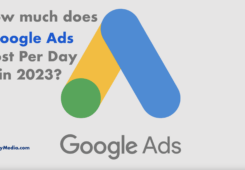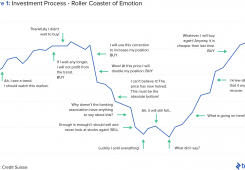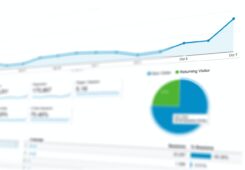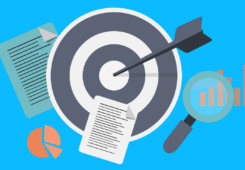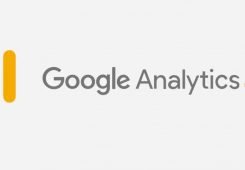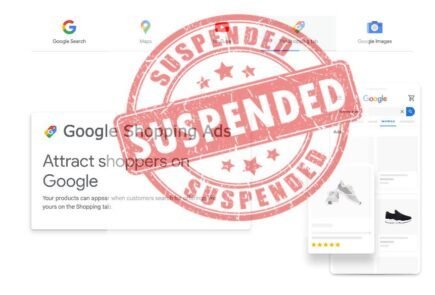I. Introduction
As the world’s most popular search engine, Google processes more than 3.5 billion searches per day. Google Ads, previously known as Google AdWords, is a popular online advertising platform that allows businesses to display their ads on Google’s search results pages and across the Google Network. In this article, we’ll discuss what Google Ads are and how they work.
II. What are Google Ads?
Google Ads is an online advertising platform that allows businesses to create and display ads on Google’s search engine results pages (SERPs), Google Maps, YouTube, and other Google-affiliated websites. It’s a pay-per-click (PPC) advertising system that means businesses only pay when someone clicks on their ads.
Google Ads offers various types of ad formats, including text ads, display ads, video ads, shopping ads, and app ads. With Google Ads, businesses can target specific audiences based on location, keywords, interests, demographics, and more.
III. How do Google Ads work?
A. Setting up a Google Ads account
To get started with Google Ads, businesses need to create a Google Ads account. They can sign up for an account by visiting the Google Ads website and following the step-by-step instructions.
B. Creating a campaign
Once the account is set up, businesses can create a campaign by selecting the type of ad they want to run and setting a budget.
C. Selecting keywords
Next, businesses need to select relevant keywords that they want their ads to appear for. Google Ads has a keyword planner tool that can help businesses find the right keywords to target.
D. Setting bids and budgets
Businesses need to set bids for each keyword they’re targeting. The bid amount represents the maximum amount they’re willing to pay for a click on their ad. They also need to set a daily or monthly budget to ensure they don’t overspend on their advertising.
E. Writing ad copy
Once the keywords and bids are set, businesses need to write compelling ad copy that will entice people to click on their ads. Ad copy should include relevant keywords and a clear call to action.
F. Launching and monitoring your campaign
After the ad copy is written, businesses can launch their campaign. Once the campaign is live, they need to monitor their ads’ performance, adjust bids, and tweak their ad copy to improve their campaigns’ overall performance.
IV. Benefits of using Google Ads
A. Targeted Advertising
Google Ads allows businesses to target specific audiences based on location, demographics, interests, and more. This targeting feature ensures that businesses’ ads are shown to people who are most likely to be interested in their products or services.
B. Measurable Results
Google Ads provides detailed reports on how campaigns are performing, including the number of clicks, impressions, and conversions. This data helps businesses measure the return on investment.
IV. Benefits of using Google Ads
C. Cost-Effective
Google Ads is a cost-effective way for businesses to advertise their products or services. Since it’s a pay-per-click system, businesses only pay when someone clicks on their ads. This means that businesses can set a budget that works for them and only pay for the clicks they receive.
D. Brand Awareness
Google Ads can help businesses increase brand awareness by displaying their ads on Google’s search engine results pages, YouTube, and other Google-affiliated websites. This exposure can help businesses attract new customers and build brand recognition.
E. Competitive Advantage
Google Ads can give businesses a competitive advantage by allowing them to show up at the top of Google’s search results pages. This can help businesses attract more clicks and conversions than their competitors.
V. Tips for successful Google Ads campaigns
A. Test and tweak your ad copy
Businesses should regularly test and tweak their ad copy to improve their campaigns’ performance. They can try different headlines, descriptions, and calls to action to see what works best.
B. Target the right audience
Targeting the right audience is essential for a successful Google Ads campaign. Businesses should use Google Ads’ targeting options to ensure their ads are shown to people who are most likely to be interested in their products or services.
C. Monitor and adjust bids
Monitoring and adjusting bids is crucial to getting the most out of a Google Ads campaign. Businesses should regularly check their bids and adjust them as needed to ensure they’re getting the best return on investment (ROI).
D. Keep track of your ROI
Keeping track of ROI is essential for determining whether a Google Ads campaign is successful. Businesses should regularly review their campaigns’ performance data and adjust their strategies as needed to improve ROI.
E. Hiring Google Ads Experts
It is always better to hire a highly experienced Google Ads expert agency that can provide personalised service, winning Google Ads Strategy and daily optimisation, testing, tracking & measurement.
VI. Conclusion
Google Ads is a powerful advertising platform that can help businesses reach their target audiences and achieve their marketing goals. By following the steps outlined in this article and implementing the tips for success, businesses can create effective Google Ads campaigns that drive traffic, generate leads, and increase sales.
VII. FAQs
- What is the difference between Google Ads and organic search results?
- Google Ads are paid advertisements that appear at the top and bottom of search engine results pages, while organic search results are web pages that appear in the main body of the search results based on their relevance to the search query.
- How much does it cost to run a Google Ads campaign?
- The cost of running a Google Ads campaign varies depending on factors such as the industry, competition, and keywords being targeted. However, businesses can set their own budget and only pay for clicks on their ads.
- Can I target specific locations with Google Ads?
- Yes, Google Ads offers location targeting options that allow businesses to show their ads to people in specific geographic locations.
- How long does it take to see results from a Google Ads campaign?
- The time it takes to see results from a Google Ads campaign varies depending on factors such as the campaign’s goals, budget, and targeting. However, businesses can start seeing clicks and conversions shortly after launching their campaigns.
- What are the best practices for writing ad copy in Google Ads?
- Some best practices for writing ad copy in Google Ads include using clear and concise language, highlighting unique selling propositions, including a call-to-action, and testing different variations to see what works best.
In conclusion, Google Ads is a powerful advertising platform that can help businesses reach their target audiences and achieve their marketing goals. By understanding how Google Ads works and following the tips and best practices outlined in this article, businesses can create effective campaigns that drive traffic, generate leads, and increase sales.


